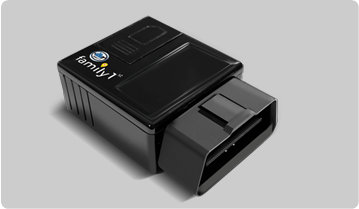Family1st GPS Trackers Review: Real-Time Safety, Straightforward Plans, and Five Standout Devices
GPS trackers aren’t just for gearheads anymore. Families, caregivers, small business owners—even pet parents—are leaning on compact GPS units

GPS trackers aren’t just for gearheads anymore. Families, caregivers, small business owners—even pet parents—are leaning on compact GPS units to keep an eye on what matters most. Family1st has built its entire brand around that simple promise: real-time tracking that’s easy to use and priced to fit a household budget. In this deep dive, I put Family1st under the microscope: what the company sells, who it’s best for, where it shines (and where it doesn’t), and the five products that best represent the lineup right now. If you’re comparing portable GPS trackers, OBD plug-ins for the car, an ultra-long-life asset tracker, a senior medical alert with fall detection, or just a rugged magnetic case to mount your device outside the vehicle, you’ll find detailed, plain-English guidance below.
Brand Snapshot
Family1st focuses on consumer-friendly GPS solutions with mobile and desktop tracking, geofences, safety and driver behavior alerts, and multi-device management under one account. The platform targets families, teen drivers, caregivers for seniors, and small fleets. You’ll see practical promises front and center—free U.S. shipping on devices, a 30-day money-back policy, and warranties that vary by product (some listings call out lifetime coverage on selected items, while others specify one-year terms). The app experience is designed to be low-friction: set up a tracker, draw a geofence, decide which alerts you want via email/SMS, and start getting real-time pings at the interval you choose. Subscription plans are clearly a part of the model, with options suited to how often you need updates and how many devices you run. In short, Family1st tries to lower the learning curve so that anyone—regardless of tech comfort—can get value within minutes of activation.
THE TOP FIVE
1) Portable GPS Tracker

Family1st’s bread-and-butter is a compact, durable portable unit that fits in a pocket, bag, or glove box and pulls double duty for people and property. The design is small and unobtrusive, and while it’s light enough for everyday carry, it’s sturdy enough for rough-and-tumble in a backpack or under-seat placement in a car. The key promise here is practical runtime: up to around two weeks on a charge in typical use, which means fewer “did I remember to plug it in?” moments in busy households.
On the feature side, it checks the boxes most buyers expect today: real-time GPS tracking over 4G LTE, geofence entry/exit alerts, a searchable trip history with speed data, and a weather-resistant build that tolerates everyday splashes and dust. The companion app (iOS/Android) and web dashboard are laid out for quick scanning—great when you’re glancing at a location in the school pickup line or combing through a teenager’s driving history after the fact. For parents, caregivers, and anyone who wants flexible tracking without tearing into the car, this is the “default recommendation” in the Family1st catalog. The on-site price point is aggressively low for an entry into real-time GPS, which is part of why this model shows up so often in customer stories about daily safety wins.
2) Family1st Plug in GPS Tracker

If you prefer an always-powered tracker with richer vehicle data, the Family1st Plug in GPS Tracker connects right to your car’s OBD port. The form factor is straightforward—plug it in once and forget it—and in return you get live location plus car-centric alerts and basics like ignition on/off. For households, that means no sneaking into the garage to swap batteries; for teen drivers or college commuters, you simply open the app and see where the vehicle is and how it’s being driven.
Because it draws power from the OBD port, this unit is ideal for constant use in a daily driver. Beyond the must-haves (live tracking, geofences, notifications), the selling point is health and behavior context: speeding or hard-braking flags for coaching safer driving, and ignition-based alerts when a vehicle moves outside approved hours. Installation is literally “plug-and-go,” so there’s no wiring harness, class-10 SD card, or discrete battery pack to manage. It’s the best fit when you’re tracking one or two primary cars and want minimal maintenance without sacrificing timely updates.
3) Weatherproof Magnetic Case for the Portable GPS Tracker

This rugged, low-profile case is the quiet hero of outdoor and under-vehicle placement. It’s built for the Portable GPS Tracker, adding a protective shell that shields against rain, road grime, and splash while introducing a hefty magnet for quick mounting on steel surfaces. The case is compact enough to tuck out of sight and sturdy enough to stay put, with a pull strength that inspires confidence when you hit a pothole. It’s also handy for non-vehicle uses—think tool chests, utility trailers, or farm equipment—where you want to avoid drilling holes just to create a mount point.
If you already own the Portable GPS Tracker, this is one of those “pay once, use for years” upgrades that opens new placement options. The ability to mount outside the cabin gives you more reliable satellite visibility and makes relocations painless: detach, reattach, and go. Because the case is sealed up tight, it also keeps the tracker looking newer longer—useful if you plan to rotate devices between family members or resell later.
4) Family1st Belle+ Medical Alert for Seniors (Fall Detection + GPS)

Belle+ combines a GPS tracker with a two-way voice pendant designed specifically for seniors. The goal here isn’t covert tracking—it’s confident independence with a clear line to assistance. The device incorporates fall detection, GPS and Wi-Fi location technologies, and a speaker/microphone system that connects directly to a trained operator at the press of a button. For caregivers, that means faster clarity in an emergency and better peace of mind the rest of the time.
The pendant is compact and shower-resistant, with a days-long battery life appropriate for real-world routines. The kit typically includes a charging cradle and simple wearing options like a lanyard or belt clip, and the experience is intentionally streamlined: keep it charged, wear it daily, and know that help is a button-press away. If your primary need is a medical alert with reliable location and fall detection baked in—rather than a general tracker to hide in a backpack—Belle+ is the right tool. It’s also paired with subscription support geared to response services rather than just map pings, so the day-to-day value calculus is a bit different than a standard portable GPS device.
5) Family1st GPS Asset Tracker

Where the Portable GPS Tracker prioritizes flexibility and the OBD unit prioritizes convenience, the Family1st GPS Asset Tracker is about endurance. This brick-strong device is built for harsh environments and months-to-years deployment on assets that don’t have their own power—trailers, RVs, heavy equipment, seasonal vehicles, and storage units. The housing is weather-proof, the mounting options include built-in magnets for quick installs, and the internals are tuned for very long life at sensible update intervals.
The highlight is battery strategy: set your reporting cadence to match the asset’s expected movement, and the device trades second-by-second pinging for a battery life measured in years. That makes it well-suited for assets that sit or move infrequently: construction gear, boats on the hard, or a trailer stored offsite all winter. When movement matters—say, a geofence breach—the device can step up its check-ins to keep you informed. If your use case is “deploy and forget until it matters,” this is the Family1st model to shortlist.
Hands-On Impressions / User Experience
Family1st’s ecosystem leans practical over flashy. Setup is fast: activate the device, scan or enter its ID in the app, and it appears on your map. The interface is designed for at-a-glance location with details one tap away. Geofences are handled through a simple draw-and-save flow, and alert toggles make it straightforward to dial in the noise level—speed alerts for a teen, late-night movement flags for a shared vehicle, or geofence exit alerts for a utility trailer.
Day to day, the difference between the Portable GPS Tracker and the OBD unit comes down to power and placement. If you don’t want to worry about charging and you’re tracking one car, OBD is easy. If you want to move a tracker between people, cars, and bags—or you’re tracking things with no OBD port—portable wins. Belle+ sits in its own lane: you’re not trying to hide it; you’re trying to provide an easy, reliable SOS and location signal to a team that can help.
A few practical notes from living with GPS trackers:
- Notifications: Start conservative and add more as needed. Speed + geofence alerts cover 90% of family use without creating alert fatigue.
- Charging cadence: For portable units, align charging with an existing weekly routine (e.g., Sunday night device charging). The fewer new habits the better.
- Placement: Metal and thick materials attenuate GPS signals. Under-seat or near-window locations work better than glove boxes; the magnetic case improves signal by allowing exterior placement when appropriate.
- Sharing access: If multiple caregivers or co-parents need visibility, set up shared logins and teach everyone how to mute or snooze notifications.
Features & Specs (Skimmable)
- Live, real-time GPS tracking with user-set update intervals.
- Geofencing with entry/exit alerts; speed, hard-braking/acceleration, late-night driving flags.
- iOS/Android apps plus desktop web dashboard; multi-device management under one account.
- Portable unit: compact footprint and weather-resistant body; roughly two-week battery in typical use.
- OBD unit: plug-and-play power, ignition status, and vehicle-centric alerts.
- Belle+ pendant: two-way voice, fall detection, GPS + Wi-Fi location, shower-resistant build.
- Asset tracker: ruggedized housing, very long-life battery strategy with movement-sensitive updates.
- Free U.S. shipping on devices; 30-day money-back policy; warranties vary by device.
- Subscription plans available (monthly/annual options); app and email/SMS notifications supported.
Quality, Reliability & Support
Family1st emphasizes approachability: documentation, tutorials, and a help center structure most common questions by device type. Support channels include email and phone, with hours listed for live assistance on weekdays. In terms of hardware assurance, Family1st advertises a 30-day money-back period across the board and product warranties that differ by model. Some product pages highlight lifetime coverage on selected items; other listings specify one-year terms. Practically, that means you’re protected for defects and have a return window to confirm the device fits your routine. The company’s stance against illicit use is stated repeatedly; that may sound obvious, but it’s helpful framing for first-time buyers navigating the ethics of tracking.
Pricing & Value for Money
Family1st’s value proposition starts with hardware that’s priced below what you might expect for real-time GPS, then adds subscription flexibility so you can match cost to needs. The Portable GPS Tracker is listed at $29.95 (with a higher struck-through reference price shown on-site), positioning it as a low-risk entry to test the platform. The Family1st Plug in GPS Tracker comes in at $55.99, reflecting its always-powered convenience and vehicle-data focus. The Weatherproof Magnetic Case sits at $18.95, a small add-on that meaningfully expands mounting options and protects the device. Belle+ is promoted as FREE with service (with a former list price shown on-site), and its ongoing value is tightly coupled to its monitoring subscription, which is pitched toward response availability and location assistance rather than just raw map pings. The Asset Tracker does not display a numeric price on the Family1st site; plan accordingly if you need extended deployments.
Stepping back: if you’re a family with one or two drivers and occasional asset tracking needs, a single portable unit plus the magnetic case may deliver the best bang-for-buck. If you need true set-and-forget vehicle tracking with behavior flags, the OBD unit’s price premium is justified by never having to charge. For caregivers, Belle+ is a different calculus entirely, because the “value” is peace of mind and time-to-help, not trip histories.
Who It’s Best For / Who Should Skip It
Best for:
- Parents coaching new drivers who want speed and geofence alerts without rewiring a car.
- Caregivers seeking a senior-first device with fall detection and two-way voice (Belle+).
- Owners of trailers, RVs, boats, and equipment who need long-interval, long-life asset monitoring.
- Co-parents and caregivers who share responsibilities and need multi-device, multi-login visibility.
- Small businesses with a handful of vehicles or assets that don’t require enterprise-grade fleet software.
Consider other options if:
- You need sub-second, high-frequency telemetry for motorsports or professional dispatch—Family1st prioritizes consumer-friendly update intervals over ultra-dense data logging.
- You must integrate with large fleet management systems and third-party maintenance platforms.
- You want fully offline logging for remote backcountry trips with no cellular fallback; the lineup assumes cellular connectivity for best results.
Comparisons (Within Family1st)
- Portable vs Plug-in (OBD): Choose the Portable if you need flexibility across people, cars, and bags, or when an OBD port isn’t available (older vehicles, motorcycles, gear). Choose the Plug in if you’re tracking a single vehicle long-term and want never-charge convenience plus ignition and behavior context.
- Portable + Magnetic Case vs Asset Tracker: If exterior mounting and better sky view are the goals for a car or truck you drive often, the Magnetic Case + Portable combo wins on responsiveness and versatility. If the item moves rarely and battery changes are a pain, the Asset Tracker is built for endurance.
- Portable vs Belle+: Portable gives you silent, flexible tracking and history. Belle+ is about dignity and direct assistance for seniors—two-way voice, fall detection, and operator workflows that get help to the right place.
Buying Guide — How to Choose the Right Family1st Device
- Power & Runtime: Do you want set-and-forget power (OBD), multi-week portability (Portable), or multi-year endurance (Asset Tracker)?
- Use Case Fit: For a person you care for, does a medical alert pendant (Belle+) make more sense than a hidden tracker?
- Mounting & Environment: Interior placement is easy; exterior placement benefits from the Magnetic Case. For rough weather or heavy gear, prioritize rugged housings.
- Alerts You’ll Actually Use: Start with geofence + speed for drivers; add late-night and hard-braking only if needed. For seniors, prioritize fall detection and reliable two-way audio.
- Privacy & Consent: Align on expectations with teens, co-parents, or employees. Tracking should improve safety and trust, not undermine it.
- Budget & Plans: Price the device and the subscription together. Pick the update interval that matches your real-world needs rather than chasing the fastest possible ping rate.
FAQs
Do I need a subscription?
Yes. Family1st devices use cellular networks for real-time updates, and service plans fund those connections. Plans are typically offered monthly with discounted annual options.
How hard is installation?
The Portable unit activates in the app and drops in a glove box, bag, or the included mount/case. The OBD tracker plugs into the vehicle’s diagnostic port—no tools required. Belle+ ships with a charging cradle and simple wear options.
Can I track indoors?
GPS works best with clear sky view. When a device is indoors or obstructed, Wi-Fi and cellular triangulation help approximate location, and alerts still flow as configured.
What’s the return policy?
Family1st offers a 30-day money-back period. If a product is defective after that, replacement terms depend on the device’s warranty (some pages call out lifetime coverage on selected products; others specify a one-year term).
What alerts can I set?
Common options include geofence entry/exit, speeding, harsh braking/acceleration, ignition on/off (OBD), late-night driving, and low-battery. Belle+ focuses on fall detection and SOS workflows.
How many devices can I manage?
Multiple devices can be added to a single account, which is handy for families and small fleets. You can toggle which alerts fire for each device to reduce noise.
Is there any special mounting I need for outside the vehicle?
If you plan to mount a portable tracker under a chassis or on a trailer frame, the Weatherproof Magnetic Case adds protection and strong magnetic attachment for quick installs.
Verdict
Family1st’s lineup hits the sweet spot for families, caregivers, and small operators who want reliable real-time tracking without enterprise complexity. The Portable GPS Tracker is the most versatile everyday pick, the Plug in GPS Tracker is the maintenance-free choice for a dedicated vehicle, and the Weatherproof Magnetic Case is the low-cost upgrade that unlocks exterior mounting. Belle+ earns a category of its own with fall detection and two-way voice designed for seniors. And for assets that need months-to-years coverage, the Family1st GPS Asset Tracker delivers peace of mind without weekly charging chores. If your priorities are simple setup, sensible alerts, and fair pricing, Family1st is an easy brand to recommend—and these five products are the ones to start with today.








